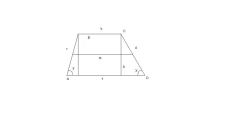The meaning of the word "epithelium" refers to the layer of cells that line the mucosa of internal organs and the inner surface of the body. Its purpose is to protect external and internal organs from various infections and mechanical injuries.
There are several types of epithelial tissues:
cubic,
- flat,
- cylindrical,
- ciliated,
- pseudomesosella,
- layered.
Cuboidal epithelium forms the kidney tubules and performs at the same secretory function.Cells of this type resemble the shape of a cube in cross section, and in fact its name.
Flat - is a tightly connected thin cells. They form a layer on the walls of the capillaries and the alveoli of the lungs. These cells are an indicator of the health of a person when collecting a urine sample. The thing is. that in a healthy person the number of the squamous cells in the urine slightly, with developing pathology, their number increases significantly.
Columnar epithelium envelops the intestinal wall and stomach. The shapes of these cells are similar in appearance to the cylinder, they are narrow and high. The main function of the columnar epithelium cells - mucus, can protect the internal organs from autodigestion of the cells. In addition, they help move food.
The cells of the ciliated epithelium lining the wall of the spinal canal, respiratory tract, oviducts and ventricles of the brain. The main difference from the cylindrical type is the presence of a large number of cilia.
Multilayered epithelium contain multiple layers of cells, thereby protecting the covered their bodies from damage and the infiltration of various substances.
Single layer is the number of cells attached to the basement membrane. Cells of this epithelium covers the cornea of the eye from the back side, lining the cavity of the heart, lymphatic and blood vessels and form the outside of the capsule of the renal glomerulus.
The flat neorogovevayuschy epithelium creates a covering layer of the mucous membrane of the esophagus and mouth, lines the transition region of the anal canal, vagina, envelops the external surface of the cornea, and the area of the female urethra. In its composition it is possible to distinguish three layers: basal, spinous and superficial or intermediate.
Cells keratinizing epithelium extend over the entire surface of the skin, making it the epidermis. Keratinizing epithelium is formed from five layers: the basal, spiny, granular, brilliant and Horny.
The types of epithelial tissues
There are several types of epithelial tissues:
cubic,
- flat,
- cylindrical,
- ciliated,
- pseudomesosella,
- layered.
Cuboidal epithelium forms the kidney tubules and performs at the same secretory function.Cells of this type resemble the shape of a cube in cross section, and in fact its name.
Flat - is a tightly connected thin cells. They form a layer on the walls of the capillaries and the alveoli of the lungs. These cells are an indicator of the health of a person when collecting a urine sample. The thing is. that in a healthy person the number of the squamous cells in the urine slightly, with developing pathology, their number increases significantly.
Columnar epithelium envelops the intestinal wall and stomach. The shapes of these cells are similar in appearance to the cylinder, they are narrow and high. The main function of the columnar epithelium cells - mucus, can protect the internal organs from autodigestion of the cells. In addition, they help move food.
The cells of the ciliated epithelium lining the wall of the spinal canal, respiratory tract, oviducts and ventricles of the brain. The main difference from the cylindrical type is the presence of a large number of cilia.
Pseudomesosella epithelium covering urinary and respiratory tract, thus forming only a single row of cells.
Multilayered epithelium contain multiple layers of cells, thereby protecting the covered their bodies from damage and the infiltration of various substances.
Types of squamous epithelium
Single layer is the number of cells attached to the basement membrane. Cells of this epithelium covers the cornea of the eye from the back side, lining the cavity of the heart, lymphatic and blood vessels and form the outside of the capsule of the renal glomerulus.
The flat neorogovevayuschy epithelium creates a covering layer of the mucous membrane of the esophagus and mouth, lines the transition region of the anal canal, vagina, envelops the external surface of the cornea, and the area of the female urethra. In its composition it is possible to distinguish three layers: basal, spinous and superficial or intermediate.
Stratum corneum - the surface, its scales will eventually disappear, and instead come cells from the underlying layers.
Cells keratinizing epithelium extend over the entire surface of the skin, making it the epidermis. Keratinizing epithelium is formed from five layers: the basal, spiny, granular, brilliant and Horny.












